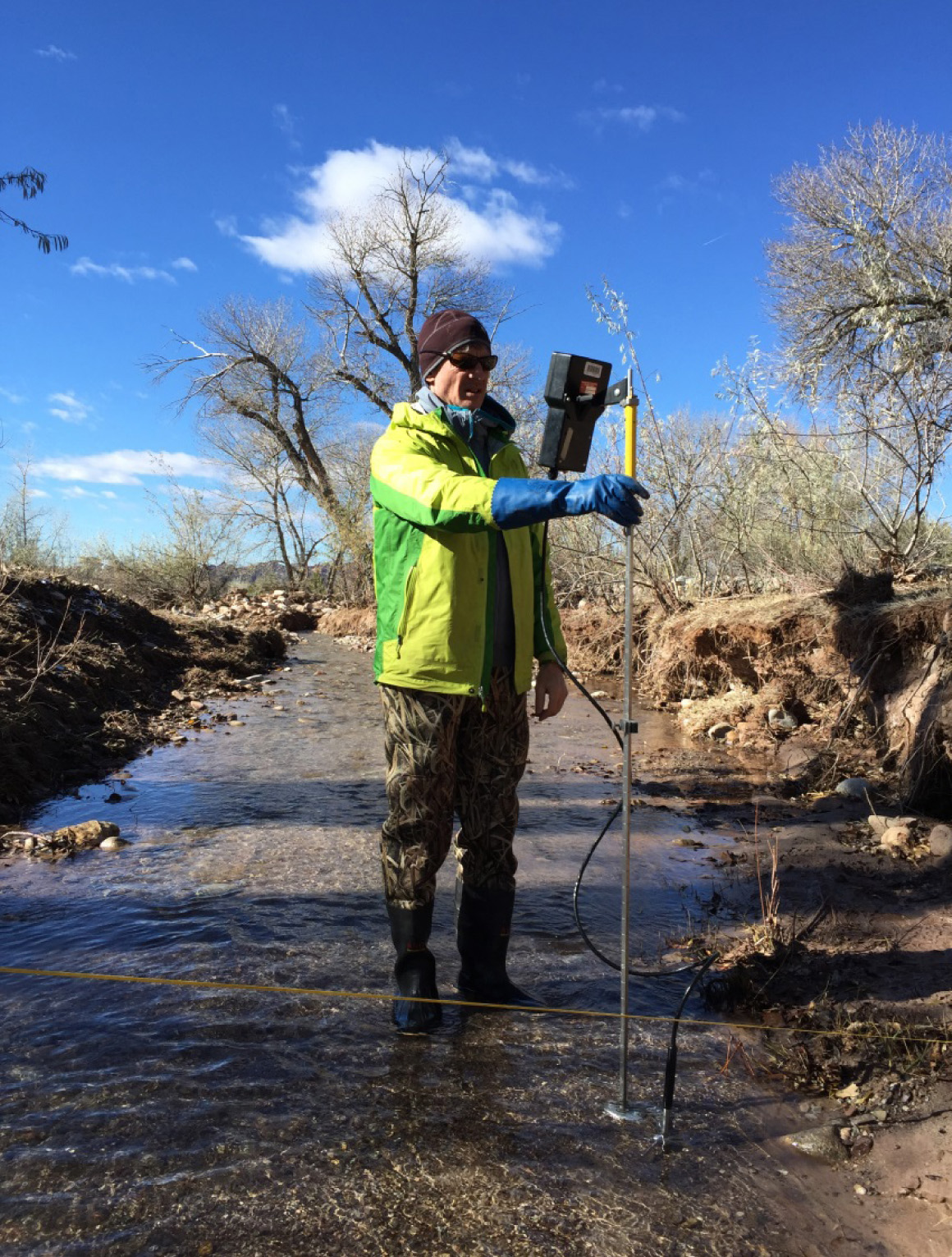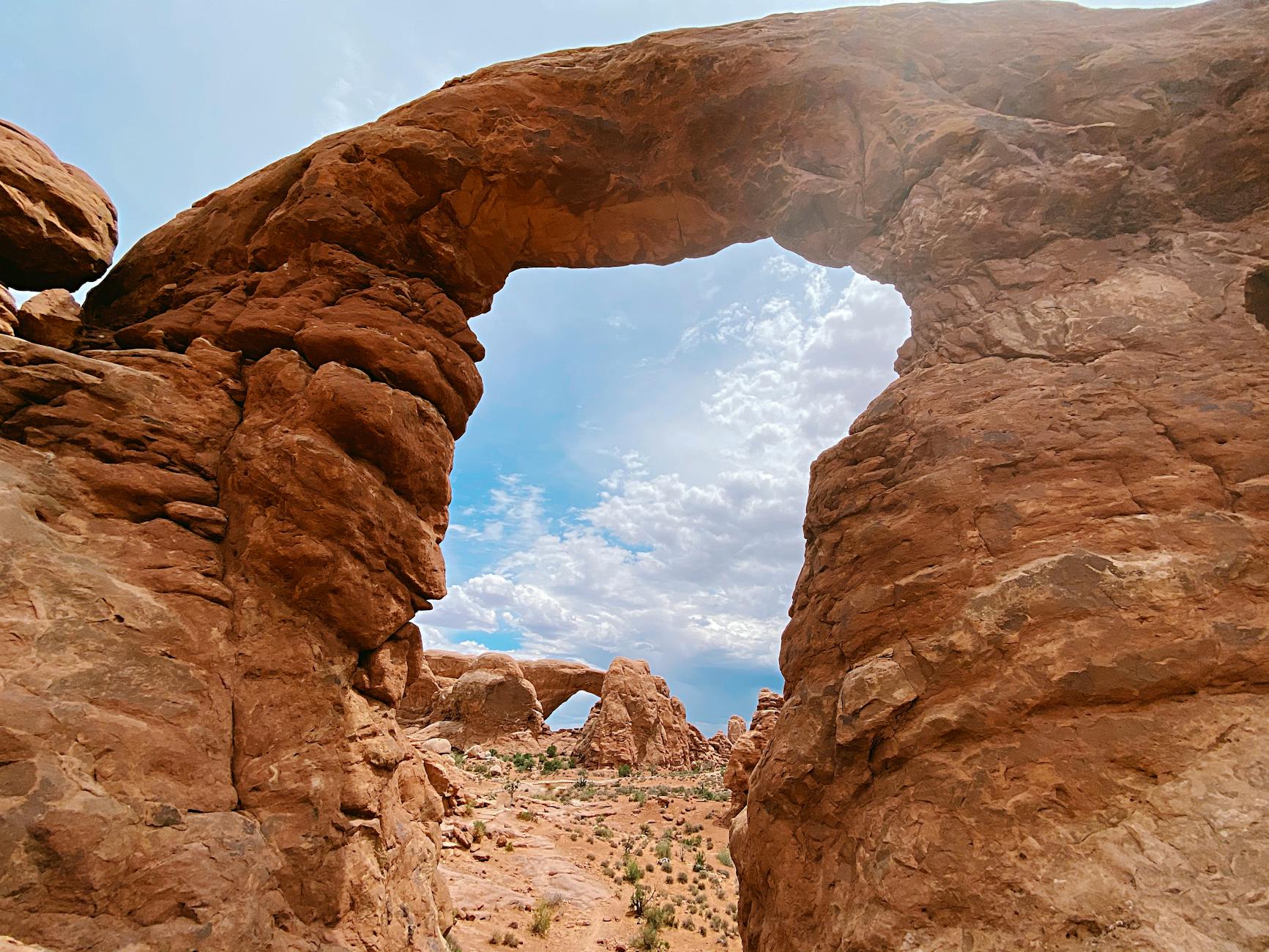Preliminary findings from a U.S. Geological Survey (USGS) groundwater study of Moab and Spanish Valley have given scientists a better understanding of how water enters and leaves area aquifer systems, but the study remains inconclusive as to how much water is available for use.
The three-year study, which began in 2014, was spearheaded by the Utah Division of Water Rights (DWR), and hopes to determine the rate of recharge for the Glen Canyon Group and valley-fill aquifers in order to arrive at a water budget for Moab/Spanish Valley.
The DWR plans to use the study’s findings to develop a groundwater management plan to guide future development in both the Grand and San Juan County portions of the valley.
“We need to know how much water is available for appropriation so we aren’t pulling out more than is being recharged,” DWR southeastern regional engineer Marc Stilson said.
Stilson cited two groundwater basins in southwestern Utah, including one near rapidly growing Cedar City, that he said are “heavily overdrawn.”
“We don’t want to get there in Grand and San Juan counties,” he said.
Speaking at a Nov. 8 presentation to elected officials and local residents, USGS scientist Victor Heilweil said the study suggests there is less connectivity between the Glen Canyon Group and valley-fill aquifers than previously thought. This lack of connectivity accounted for the discovery that less sub-surface water is being discharged into the Colorado than previously assumed, he said.
“Most of the groundwater moving through the valley is being discharged on the surface through springs and streams well above the Matheson Wetlands,” Heilweil said. “That’s the important finding.”
The Glen Canyon Group Aquifer is the sole-source aquifer for culinary water in Moab and Grand County. It is located above the eastern benches of the valley, primarily within porous Navajo sandstone. The study has shown that the aquifer is primarily recharged from high up in the La Sal Mountains.
The valley-fill aquifer is in the valley bottom where water is stored in sand and gravel. Independent wells in the San Juan County portion of Spanish Valley draw from there.
Heilweil said that studying discharge and recharge rates was how they arrived at a “water budget,” and that didn’t include overall storage capacity within the aquifers.
“Total storage is generally not considered for sustainable development, since groundwater withdrawals exceeding the estimated total recharge or discharge from the system could cause widespread declines in groundwater levels,” he said.
Heilweil gave a preliminary estimate for a ground and surface water budget, that included the Negro Bill watershed, of about 19,000 acre-feet. But he said that researchers still have to calculate spring and stream measurements taken earlier this month, and integrate them with chemical tracer groundwater study results.
“So the final story has yet to be told,” he said.
Stilson said that the USGS estimate is in the “ballpark” of previous studies that estimated between 14,000 to 17,000 acre-feet of available water, noting that the USGS study took in a slightly larger area with the inclusion of the Negro Bill Canyon watershed.
“This is a lot of really good science from USGS,” Stilson said.
Stilson said the study showed that Moab is in good shape. He said that 5,000 acre-feet are currently being withdrawn from the ground for culinary use, and another 5,000 to 10,000 acre-feet are being drawn from Mill and Pack creeks for irrigation.
One acre-foot equals about 326,000 gallons of water. The average home in Moab and Spanish Valley uses approximately 185,000 gallons of water per year.
“If we are using half of our water resources, then Moab’s population can still double,” he said. “On top of that, you have the Colorado River.”
But Grand County Council member Chris Baird took a different view, and points out that on paper, Moab and Spanish Valley already have 20,000 acre-feet of allocated water rights.
“The 19,000 acre-feet available, if completely developed, would mean the total de-watering of Negro Bill, Mill Creek, Pack Creek, and possibly Hunter Canyon,” Baird said. “That is to say that those streams and their riparian environments, would cease to exist. No more swimming in left- or right-hand Mill Creek, and no more stream in Negro Bill and possibly Hunter Canyon.”
Baird said that the question of available water supply needed to be framed according to how much value is placed on in-stream flows for environmental and recreational uses.
“If we’re willing to give up all environmental and recreational assets respective to in-stream flows in our canyons, then yes, we have 19,000 acre-feet available,” he said. “But, if we’d like to preserve in-stream flows and their respective riparian environments, then that figure would be considerably less.”
Living Rivers Conservation Director John Weisheit said that, “Overall, it’s not looking good.” Weisheit said that at the very least, no more permits should be issued until the study is complete.
“We have a sewer problem, a supply problem, and we need to have a serious discussion here, not business as usual,” he said.
Weisheit said that with climate change, supply is becoming less and less, and that the take-home message for him was, “The idea that there is a lot of available water here just isn’t true.”
Grand County Council member Lynn Jackson found the preliminary results to be more encouraging.
“The study’s preliminary findings show we have more than adequate water supplies for our valley, with more water available than we had previously thought from past studies,” Jackson said. “The sky is not falling, as some would have us believe.”
Jackson said the study provides Grand and San Juan counties with a clearer picture of how the aquifer system functions, which will allow greater certainty for planning future growth in the entire Spanish Valley area.
He said the report will also provide the information necessary to work with DWR as it moves forward to develop a water management plan for the area.
“While some are already calling for funding for more research because these results don’t fit the scenario they prefer of immediately stopping all growth and development for lack of water, I don’t think it will be necessary,” Jackson said. “This study, which shows our estimated yearly available water of 19,000 acre-feet, gives managers and elected leaders exactly the type of quantified information required to make informed and wise decisions for future growth in the valley.”
Canyonlands Watershed Council Director Jeff Adams said that though the study is still inconclusive, it looked to him that the estimated water budget showed that there wasn’t a lot of unused or unallocated water available.
“As a community, being aware and paying attention to the amount of recharge is going to show us what we have available as we move forward,” Adams said.
Adams said that with the knowledge that the Glen Canyon Group Aquifer is being recharged from the La Sal Mountains, it is imperative that the watershed be protected.
“We need to protect healthy ecosystems up there and use water as wisely and efficiently as possible,” he said.
Final results on water budget still pending
The 19,000 acre-feet available, if completely developed, would mean the total de-watering of Negro Bill, Mill Creek, Pack Creek, and possibly Hunter Canyon. That is to say that those streams and their riparian environments, would cease to exist. No more swimming in left- or right-hand Mill Creek, and no more stream in Negro Bill and possibly Hunter Canyon.





